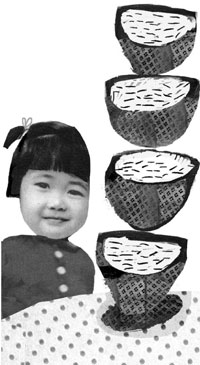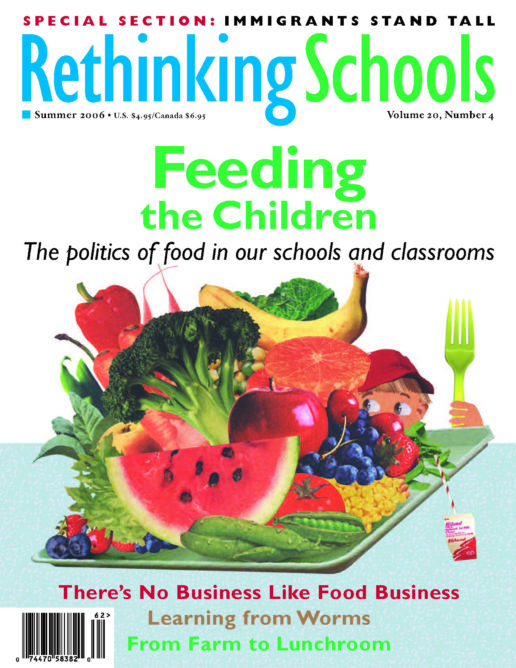Lessons from Ana
Illustrator: Katherine Streeter

Not everyone’s mealtimes look like mine.
There will not necessarily be enough food tomorrow.
Food is not for play.
These are the lessons I learned from Ana*, and this is how she taught me:
Five-year-old Ana entered our classroom and went immediately to the large container of plastic snow play toys. She retrieved the dish-like items (recycled yogurt and applesauce containers) and meticulously placed them all in a neat row. Then Ana moved down the line of dishes carrying a much larger container and a makeshift ladle. She painstakingly scooped something invisible (to me) into each smaller container.
I understood that Ana was playing her version of “house”; she was dramatizing mealtime at the orphanage in northern China where she had spent most of her young life. Ana had moved to her new home and new family only three weeks before joining our classroom.
Harrison, a classmate, quickly learned that the simplest and most effective way to terrorize Ana was to make lunging gestures toward her open lunch box. Harrison never actually took any of Ana’s carefully packaged and abundant lunchbox contents. But he intimidated Ana with the idea that he could take her food. Ana would cry, Ana’s new friends would scold Harrison, and he would smirk. As I soothed Ana, I would talk to Harrison and encourage him to consider Ana’s perspective.
Not all of the learning centers in our kindergarten classroom were available to the children every day. Some I kept for “special.” It was a Friday in February and the children stood around one particular center in acute anticipation. As I removed the cover from the sensory table, Ana shrank back in horror. I had presented the class with a play area filled with rice. In it was enough to feed how many for how long? And I was encouraging the students to stick their hands into that food, to measure, to manipulate, to play! The look on Ana’s face at the moment I lifted that cover and she first understood what I was suggesting has not left me in the intervening 10 years.
That experience helped me to conclude that using food for art or play is misguided.
Young children mostly believe their teachers. They believe that their teachers know a great deal and are generally truthful. Young children repeat their teachers’ platitudes and embrace their classroom gestures. When young children play school they model their dramatic behavior after that of their teachers, and their imitative play is often embarrassingly accurate.
I have come to realize just how confusing my use of food for play and art was, not only for Ana, but for all my young students. While we collected cans of food “for the hungry,” I also facilitated a lesson where students glued beans to cardboard to outline the letters of their names. I nagged the children to eat their lunches and not throw away food, but followed it by encouraging them in tactile exploration at the rice table. Perhaps because they wanted to continue feeling safe and cared for by a competent and thoughtful adult, the children did not question my particular brand of hypocrisy. Still, how could they not have been confused by the discrepancy between what I said about the value of food and the other lessons I provided?
Several things were inherent in my lessons: a disconnect between consumers, food, food workers, and ultimately the earth itself, a finite resource. Inherent also was the message of “them” and “us.” “We” have enough and we can therefore waste. “They” do not have enough and must rely on the more fortunate and/or capable us.
I believe guilt is a useless emotion unless it leads to change. Ana’s lessons forced me to reevaluate and change my teaching practice: In our classroom food is no longer part of our art or play.
*All students’ names have been changed.

